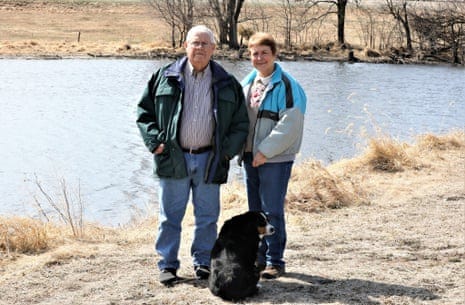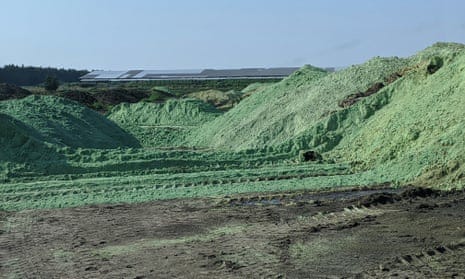First the good news: The bees are back!
But the lingering impacts of the AltEn neonic contamination catastrophe in Nebraska are frightening
If you aren’t familiar with what’s been going on in Mead, Nebraska - a tiny, rural community where the world’s largest seed companies dumped unwanted supplies of pesticide-coated seeds - you should be.
The manmade chemical contamination catastrophe there, which I first wrote about in January 2021, was a clear-cut example of how powerful industries exploit and endanger unsuspecting communities with devastating consequences for public and environmental health.
In the miles around the dump site - an ethanol plant called AltEn - bee colonies died off, pets and people were sickened and the water and soil and air became laced with dangerous levels of pesticides known as neonicotinoids. The Environmental Protection Agency (EPA) considers neonics in food and water safe at a range of up to 70 parts per billion (ppb) depending on the specific type. For the neonic known as clothianidin the benchmark for aquatic life is just 11ppb. It is 17.5ppb for a neonic called thiamethoxam.
On the AltEn property, state environmental officials recorded levels of clothianidin at a staggering 427,000ppb in testing of one of the large hills of AltEn waste. Thiamethoxam was detected at 85,100ppb.
That waste was both accidentally spilled and intentionally spread throughout the area, including on to farm fields and into waterways that provide drinking water for people and wildlife several miles downstream. It all went on for years right under the noses of state regulators.
The evidence of wrong-doing was so egregious that lawmakers and regulators finally acted (after that first story, and many subsequent additional exposes by a cadre of journalists), shutting down the seed dumping and the plant that was using the seeds for ethanol production.
Now the community is dealing with the aftermath. Academics from around the region are undertaking a sweeping study of the impacts of the contamination.
They made their first major public report in a town hall meeting to the community this week.
The good news, they reported, is that bee colonies monitored by academic researchers are surviving, even thriving, since the plant was closed and a clean-up of the neonic seed waste got underway. Also, water samples from creeks and reservoirs show declining pesticide levels.
The bad news, persists, however: Researchers have documented neonics in air and dust samples collected from some homes around the Mead area.
Dr. Ali Khan, dean of UNMC’s College of Public Health, said little research has been done on the impacts on human health from breathing in neonics in the air in your home. “Nobody has ever thought of these as you breathing it in 24/7 for several years on end,” Khan was quoted as saying by the Omaha World-Herald. “That’s just not the way anybody has ever thought about this.”

In other bad, though not surprising, news, contaminated waterways have lost an array of species, according to researchers.
Neonics have been shown to have neurotoxic effects on people and animals. Despite that unsettling fact, they are used across on an estimated 150 million acres of US farmland, and scientific research has shown they are contributing to a decline in important pollinators such as honeybees. While some countries have banned certain neonics, the US government has proposed allowing extended use.
When I visited Mead last year, the fears and frustrations expressed by the local residents were still fresh: They were afraid to drink their well water; afraid to fish and swim as they once had; one family even completely abandoned their dream home near the AltEn plant for fear of what the contamination might mean for the health of their young children.
Now the residents have settled in to a new normal. Their lives have been victimized by corporate actors and lax regulators, just as so many other people have also been victimized across the country by these types of manmade contamination events.
Academics are tracking the health of the people of Mead and surrounding areas, but how long and how deeply the community may suffer from this contamination is not yet known.
As longtime area resident Stan Keiser told me when I visited his farm - offering me a plastic bottle of water to drink because tests showed chemical contamination of his drinking well: “We want it back to what it was. That shouldn’t be too much to ask.”
I agree.





Sounds like a large scale myco-remediation is needed, if mushrooms can digest the neonics? Paul Stamets is a big propper of this, but he has been strangely silent since he started working with DARPA.
Hmm.
Glad to hear a positive came out of this...